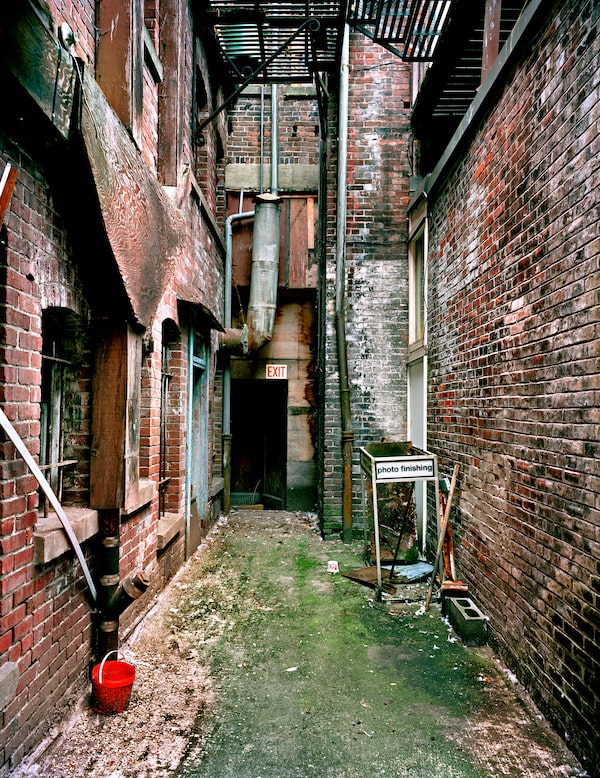Morris Lum first started noticing the decline of the Chinatown in his hometown of Mississauga back in 2012. Initially, the photographer set out to document the rapid changes he was seeing close to home. But the project, called Tong Yan Gaai (“Chinatown,” in Cantonese), soon spread to cities across North America, which were seeing the same kind of decline. “At the same time, there was great uncertainty in the film photography industry,” Morris says. “Kodak filed for bankruptcy in 2012 and so I used film to photograph the changing landscapes in our city cores.” The project, funded in part by the Canada Council for the Arts and the Ontario Arts Council, looks at significant spaces that are on the verge of disappearing and what this means for the social fabric of those communities as well as the architectural makeup of our urban centres.

Golden Happiness Plaza, Calgary 2015Morris Lum
Golden Happiness was started in 1987 by Cuong Chau and the family still owns the business. Lum’s project aims to highlight historical and contemporary cultural fixtures, such as small mom-and-pop shops, Chinese restaurants and community organizations.

Foo’s Ho Ho Restaurant, Vancouver 2016Morris Lum
Foo’s Ho Ho Restaurant on Pender Street in Vancouver closed down after decades. After opening in the 1940s, it provided village-style meals in Vancouver’s Chinatown. But as new waves of Chinese immigrants started moving to the suburbs, some of the restaurants in Chinatown started to disappear. One of the reasons Morris points to is that “the palate of North Americans has expanded, and more specialized Chinese cuisines, for example Northern-style or Sichuan, are now more accessible and accepted.”

Ho Sun Hing Printers, Vancouver 2014Morris Lum
Ho Sun Hing Printers, one of Canada’s oldest Chinese print shops, closed after 106 years in business. The printer, which was once on East Georgia Street, stayed steadfastly old-school despite the changes in technology. Hilda Lam, who had run the shop with her sons, said of her decision to sell: “The kids were born here, and they were all raised in the printing business. The grandkids don’t really care.”

Lao Tsu Mural, Vancouver, 2016.Morris Lum
The Lao Tsu Mural is in its last days, as it will soon be blocked by a new development that will stand six stories tall. The mural was commissioned by the Lee Family Association to celebrate the designation of Vancouver’s Chinatown as a historic site.

Silk Road Alley, Victoria 2014.Morris Lum
Hidden behind Silk Road Tea shop is an alleyway that Chinese workers once used to move through the city. The 1923 Chinese Immigration Act imposed a curfew on Chinese immigrants, which meant they couldn’t use main streets, so the alleyways became crucial to getting around the city. Chinatowns in both Victoria and Vancouver have preserved some of these alleyways, and some of them have been refurbished.